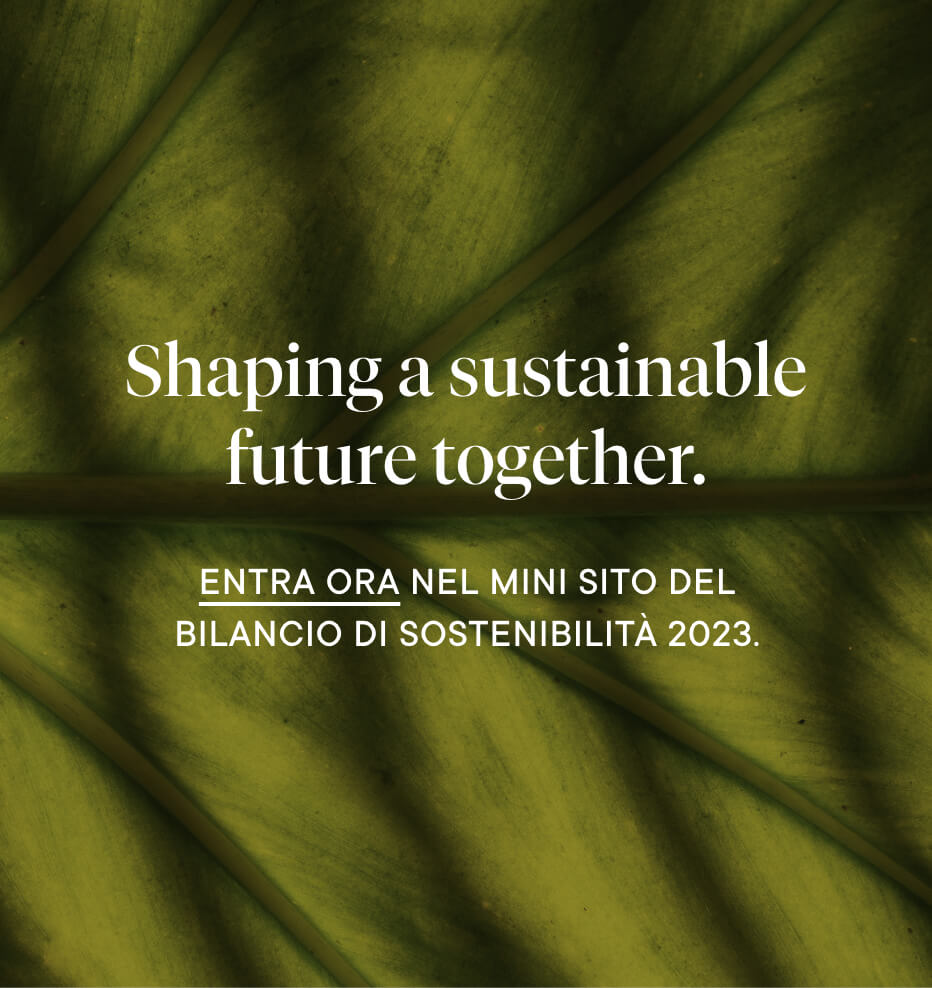Knowing in order to choose
View allDo you want to know the behind-the-scenes workings of a tannery?
What does it mean - really - to tan leather? What are the most common processes in a tannery and those that are more special? How do we talk about sustainable leather?
Let's find out together in this little "behind-the-scenes" journey into the world of leather tanning.
What is a tannery and how leather is tanned.
When people talk about tanneries, it is logical and immediate to associate them with leather tanning. The latter, however, is only one step in a complex yet fascinating process. Work in the tannery begins with the selection and inspection of raw hides, both fresh and salted. Fresh hides have to be processed in a short period of time so it can be said that tanning leather is an activity that never waits.
The main processing steps in a tannery can be divided into 3 macro-phases:
Beamhouse processing
This is the stage of preparation for tanning the leather. The evocative Italian name refers precisely to the riverside: using water, the raw hide is rehydrated and stripped of impurities (greening). It then regains flexibility and softness and is ready for depilation and liming (or liming), that is, immersion in baths of lime milk to prepare it for subsequent absorption of the tanning agents. Next, the semi-processed skin is stripped of fat and part of the leather tissue (fleshing), processed by hand (trimming) and finally "split," that is, divided horizontally to obtain the grain (upper part) and split (flesh-side part).
Leather tanning
The protagonists of this stage-which lasts approx. 24 hours-are the famous drums that rotate subjecting the leather to a "gentle" mechanical action that removes coarse fibers and allows the hides to be impregnated with tannins, chromium or other heavy metal-free agents. At the tannery, the tanned hides are then pressed, uniformed, further split and compacted. This is followed by retanning of the hides, combined with dyeing and fatliquoring. After this stage comes the drying or blow-drying of the hides (using vacuum, air or frame drying), which are now called "crust hides."
Finishing
The tanning of hides ends with the final finishing treatments (mechanical and/or chemical), which aim to give specific aesthetic characteristics to the leather depending on the type of finished product desired. During all tannery processes, controls are frequent and constant. This is because true quality leather:
- Is followed and controlled throughout processing
- Is systematically tested
- Is traceable from origin to finished product
Advanced technologies in tannery: innovation and quality.
As ancient as it is, the art of tanning is always evolving. Tanning hides today means not only offering a product of the highest quality but also trying to do so with the utmost respect for the hide and with the lowest possible impact.
In our tanneries, we process leathers with:
CHROME TANNING
Originating in the 19th century, it is the most widely used leather tanning process in the world. The raw hide is treated with chromium salts that give the semi-finished leather its typical light-blue color: this is why chrome-tanned leather takes the name wet-blue, distinguishing it from wet-white leather obtained with vegetable tanning or without chromium.
CHROMIUM-FREE TANNING
As an alternative to chrome tanning, tanned leathers can be treated with vegetable or synthetic tannins or with chrome-free agents. Chromium-free leather is used in a variety of industries: two of the applications where demand is growing are automotive and furniture upholstery.
ZERO IMPACT®
As the name suggests these are chrome-free and metal-free tanned leathers according to ISO 15987. It can be called true sustainable leather because tanning leather by this method reduces the consumption of water, chemicals, pollutants and CO₂ emissions (zeroed thanks to offset projects).
ECOMINERAL
This is an innovative formulation, a viable alternative to traditionally tanned leather . The tanning of leather is done with Zeolite: the result is real sustainable leather, obtained thanks to a natural substance present in the earth's soil in abundance. As can be seen, the new techniques and technologies applied to leather tanning have as their main driver further increasing the sustainability of the processes. Currently, more than 98% of residues from tannery processing become raw materials for other industries such as:
- Collagen and gelatin for the cosmetic, pharmaceutical and biomedical industries
- Protein for the food industry
- Fats for processing into biofuels or organic stimulants for agriculture
From form to function: exploring leather types.
What makes tanned leather a valuable material is its uniqueness. Each hide originally has a unique size, shape and appearance.
In addition, each area (cheek, shoulder, flank, rump, or breech) has special characteristics: e.g., flanks and bellies are characterized by a more pronounced grain.
Following splitting and finishing, it will also be referred to as:
Full Flower - This is when the tanned leather does not undergo any covering or corrective treatments while keeping the grain and grain characteristics natural and unaltered (e.g., visible spine mark).
Corrected grain - The grain of the semi-finished leather is sanded and can also be embellished with prints of various kinds. The grain in this case is uniform over all the surface of the leather.
Split - This is the flesh side part of the leather sectioned horizontally, also used for multiple applications.
Other useful classifications to know are based on the type of final skin treatment and its appearance. According to the finish we will then have:
- Aniline leather: has the natural grain clearly visible
- Semi-aniline leather: slightly uniformed by the finish
- Pigmented leather: with a teancious finish that does not hide the natural grain
- Based on the appearance we will finally talk about grain, smooth, printed or nubuck leather.
Tailor-made leather: applications and uses.
In the tannery, leather is selected, treated and tailored to its intended use. This is because each sector has its own requirements and each application has its own particularities. The art of leather tanning lies precisely in transforming a product that was originally a raw material into a finished one, created specifically for the purpose.
Leather for upholstery - Aniline, nubuck, full grain or corrected grain leather with a variety of grain types, finishes and thicknesses are used. The watchwords are versatility, exclusivity but also safety (e.g., compliance with European standards for reaction to fire).
Leather for leather goods - Our starting point is raw materials of the highest quality: European cowhides and North American deerskins. The end point is unique processing for a high-sensory, high-performance finish.
Leather for clothing - High-quality finishes and light thicknesses are the most sought-after features for skirts, jackets, coats, gloves.
Footwear leather - Not just elegance. With technical leathers, footwear can offer superior performance in terms of breathability, durability, waterproofing and comfort.
Automotive Interior Leather - Automotive leathers must meet performance, environmental and aesthetic standards that are unmatched in other industries. A test that genuine leather passes admirably.
Leather for Transportation Carriers - From ships and airplanes to trains and luxury yachts: the priorities are elegance, extreme wear and tear resistance and compliance with the most stringent safety requirements.
Leather for Smart Devices - For leather covers for smartphones and tablets, style must be combined with durable resistance (to tears, light, stains...) and hypoallergenic materials.
Leather for Saddlery - Tanning leather, we have said, means responding to specific needs starting with an awareness of the intended use. The characteristics required for saddlery leather are elasticity, high strength, a touch of elegance and absolute comfort, for rider and horse.


